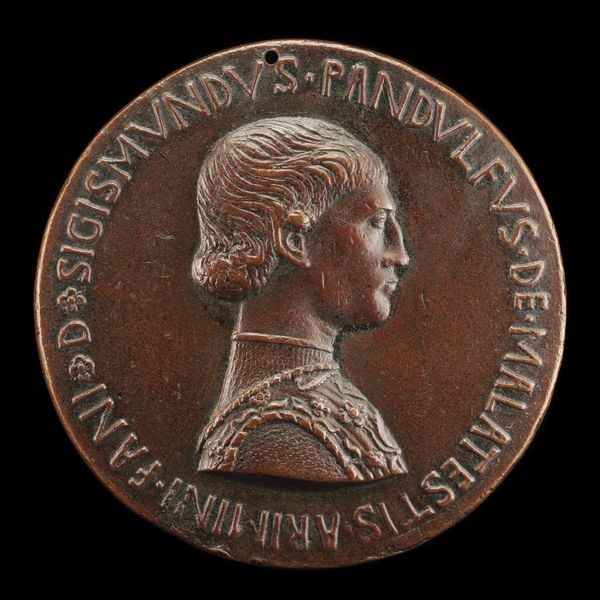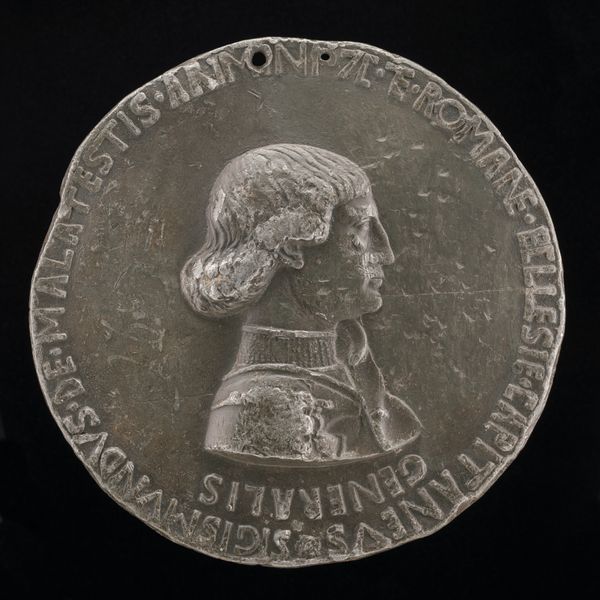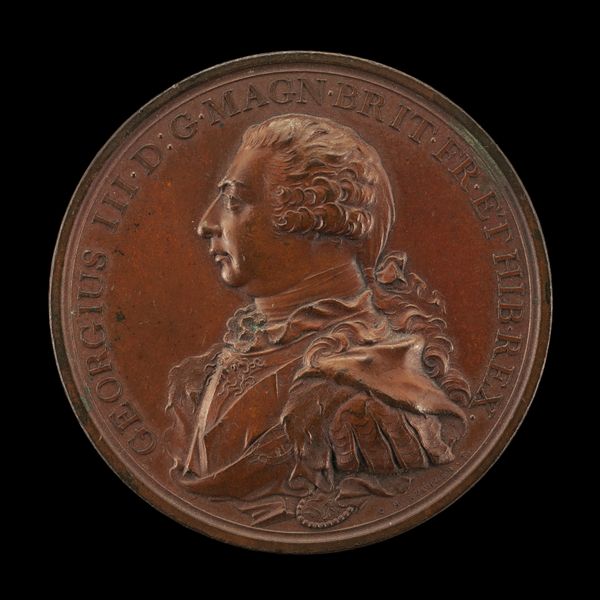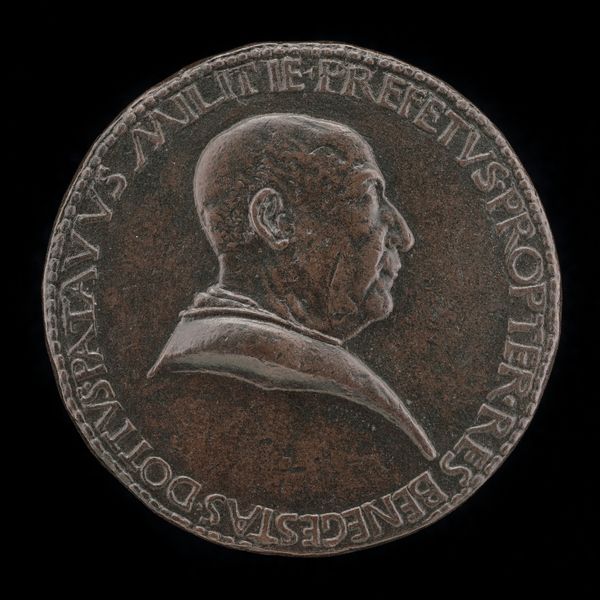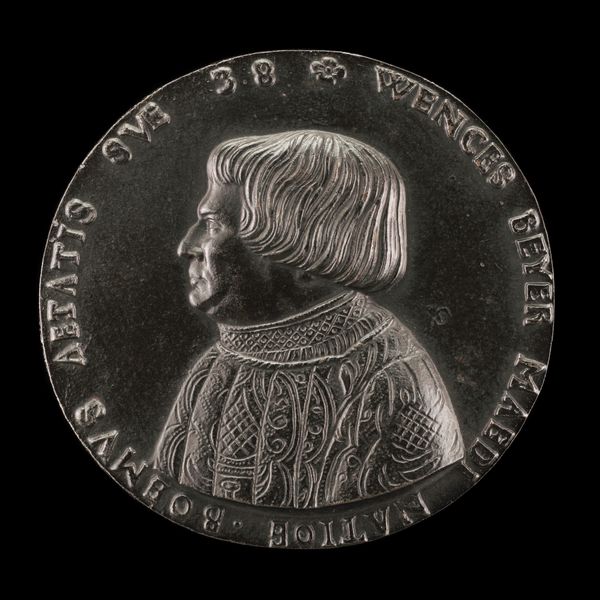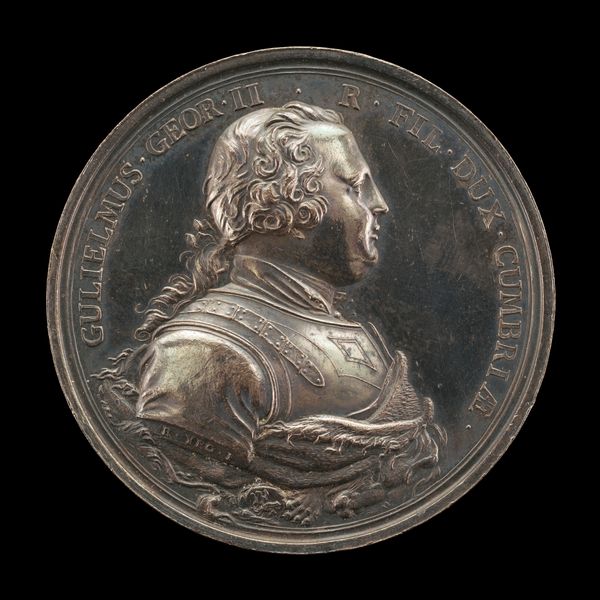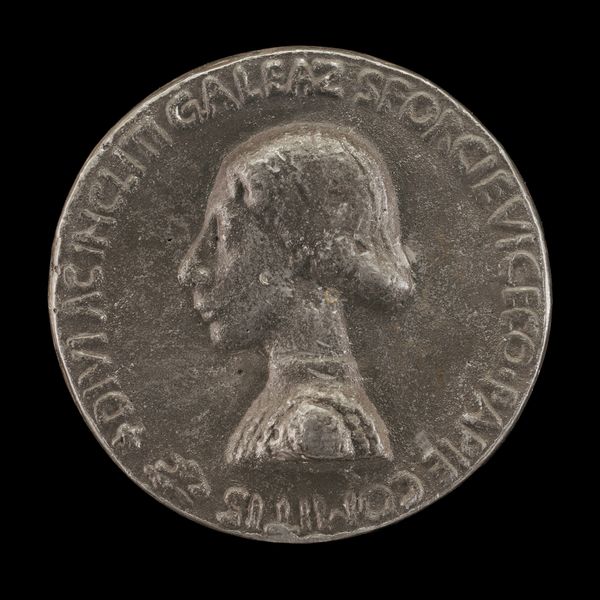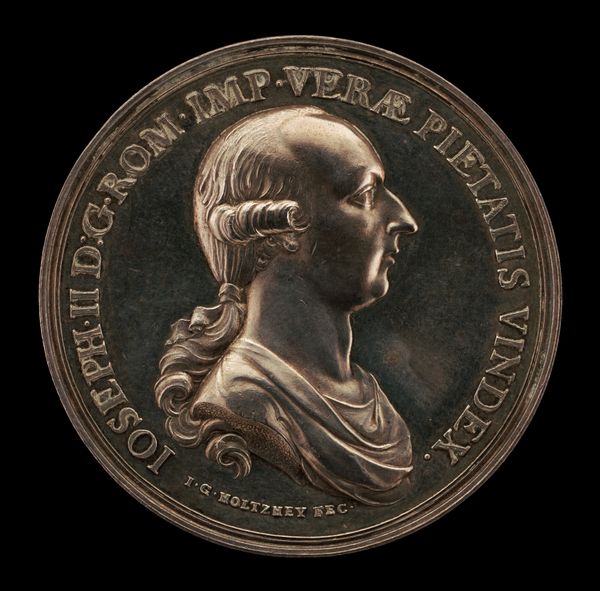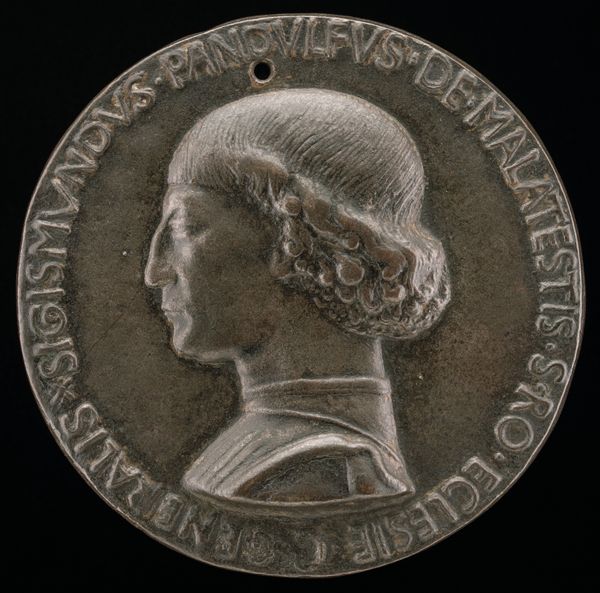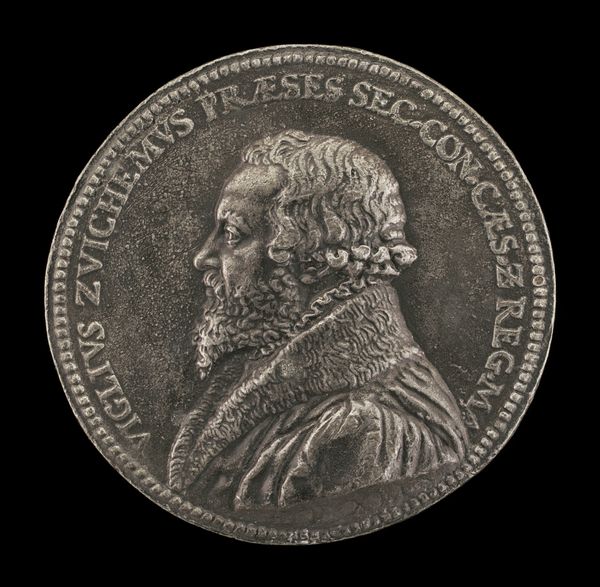![Sigismondo Pandolfo Malatesta, 1417-1468, Lord of Rimini 1432 [obverse] by Pisanello](/_next/image?url=https%3A%2F%2Fd2w8kbdekdi1gv.cloudfront.net%2FeyJidWNrZXQiOiAiYXJ0ZXJhLWltYWdlcy1idWNrZXQiLCAia2V5IjogImFydHdvcmtzLzliOWU4MTE2LTg0NTQtNDdmNS1hMzNiLTdkMjNkOWRhYmY3OS85YjllODExNi04NDU0LTQ3ZjUtYTMzYi03ZDIzZDlkYWJmNzlfZnVsbC5qcGciLCAiZWRpdHMiOiB7InJlc2l6ZSI6IHsid2lkdGgiOiAxOTIwLCAiaGVpZ2h0IjogMTkyMCwgImZpdCI6ICJpbnNpZGUifX19&w=3840&q=75)
Sigismondo Pandolfo Malatesta, 1417-1468, Lord of Rimini 1432 [obverse] 1445
0:00
0:00
bronze, sculpture, engraving
#
portrait
#
sculpture
#
bronze
#
sculpture
#
italian-renaissance
#
engraving
#
miniature
Dimensions: overall (diameter): 10.12 cm (4 in.) gross weight: 364.64 gr (0.804 lb.) axis: 12:00
Copyright: National Gallery of Art: CC0 1.0
Curator: What strikes me is the unwavering gaze, the sharp profile…it's like capturing the essence of ambition in bronze. Editor: Indeed. What we have here is Pisanello's bronze portrait medal of Sigismondo Pandolfo Malatesta, Lord of Rimini, created around 1445. These portrait medals became quite fashionable amongst Italian elites during the Renaissance. Curator: Fashionable like…trading cards for Renaissance power players? But with more gravitas, I imagine. You can practically smell the political intrigue. He's a stern character with an unflinching expression. The rigid planes of his face and body are captivating. Editor: Absolutely. Medals such as these functioned as vehicles for self-promotion and commemoration. They were often distributed as gifts, solidifying political alliances and showcasing the patron’s power and cultural sophistication. They offered a portable and reproducible image—a carefully crafted brand, if you will. Curator: A brand! Right down to the meticulously rendered hair, those elegant curls are quite captivating, such detail… It gives him a kind of romantic air that somewhat tempers his authoritative stance. And all those inscriptions—Latin, I presume?—like secret spells. Editor: Precisely. The inscriptions amplify his titles and achievements, situating him within a lineage of Roman power. Notice how the lettering frames the portrait. Curator: It does command respect, that’s undeniable. You know, looking at his armor, the delicate floral emblem is at odds with its protective and aggressive association. Do you think that signals a subtle tension of ideals? Editor: An interesting point. It could suggest a desire to project a multifaceted image: both a warrior and a cultivated leader with an appreciation for beauty. Malatesta’s reputation was quite complex—a mix of ruthlessness and patronage of the arts. Curator: So, the medal isn’t just a pretty face, it's a calculated statement. Almost feels like a performance in metal, and quite a revealing one at that. It prompts all kinds of reflections. Editor: It's a compelling demonstration of how art intertwines with politics and identity—revealing not just what was, but what its commissioner aspired it to be.
Comments
No comments
Be the first to comment and join the conversation on the ultimate creative platform.
